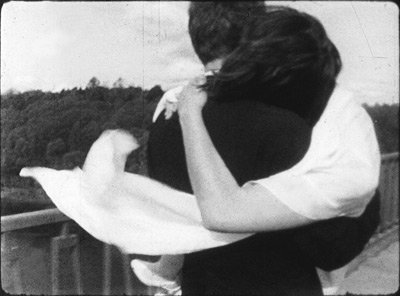Deimantas Narkevicius
dal 12/11/2008 al 15/2/2009
Segnalato da
Museo Nacional Centro de Arte Reina Sofia
12/11/2008
Deimantas Narkevicius
Museo Nacional Centro de Arte Reina Sofia, Madrid
The Unanimous Life

curated by Chús Martínez
This is the most comprehensive individual exhibition of the work of Deimantas Narkevičius (Utena, Lithuania, 1964) and his first major retrospective to date. Curated by Chus Martínez, the exhibit features twelve films that encompass practically his entire filmography, from Europe 54º - 25º19’ (1997) to The Head (2007). In addition to these films, two installations will also be displayed.
Narkevičius is an artist whose work is primarily developed in film and video format, although on occasion he has also worked with sculpture. His oeuvre subtly addresses a key theme in modern-day societies – our relationship with temporality and memory. In his films, he makes use of history and of collective memory as opposed to individual memory.
With regard to his audiovisual production, the need to understand the connection between the memory of what has been experienced and the memory of what has only been imagined is patent in works such as Scena and Energy Lithuania, and even more radically evident in one of his latest pieces, Revisiting Solaris. However, in the words of the exhibition curator Chus Martínez, “although the relationship between record, memory and testimony is at the forefront in his films, it would be a mistake to describe his work as documentary. In the different stages that constitute his film work, it is obvious that historiography is an exercise in the interpretation of images and space which, at the same time, is fuelled by hearing and speaking […] What Deimantas Narkevičius’ various creations lead us to believe is that it is as easy to mythologise reality – what has happened or is happening – as it is to discover that myths are capable of generating powerful effects of reality.” In them, the linguistic aspects, the scope of the different narratives that link each of the protagonists are just as important as the visual dimension, the research of space that takes place through the camera. Right from the start, spectators are drawn into a situation where they must distinguish the useful pasts from the disposable ones; and, at the same time, they become aware of the importance of “remembering the future” – in other words, of producing a collective imagery of what is to come, grounded in a full awareness of its potential political applications.
Specifically, Lithuania’s transition from a Soviet society to the constitution of an independent democratic state has given the artist an opportunity to emphasise the importance of understanding the emergence of a new dimension of historical time. For this reason, his work has always been influenced by the disintegration of the USSR and the social and political repercussions of the creation of new states.
Narkevičius’ films speak, as Boris Buden noted in the catalogue text, of the post-Soviet condition, of the (cultural) identity crisis, of the collapse of ideology, of issues of legacy, memory, utopia, of the authenticity of commemoration, of the relationship between personal and collective memory and between individuals and history. Narkevičius warns us that our memories are inseparable from their specific cultural form, and that this cultural form cannot be re-expressed outside of its historicity. The artist wants us to consider the past, not as it truly was but rather as it has aged, with the same vision that desperately tries to preserve it in memory.
The presence of nearly all of this Lithuanian artist’s films in what constitutes his first major retrospective is a unique opportunity for visitors to become familiar with the work of one of the most important creators on the current contemporary scene. As Chus Martínez, the exhibition curator, adds, “It allows visitors to become aware of the multiplication of stories as well as of the real and imagined spaces in which those stories take place, have taken place or may come to take place.”
About the artist:
Deimantas Narkevičius studied sculpture at the Vilnius Academy of Fine Arts (Lithuania). In the early 1990s he completed his education in London and, after a year that proved to be very enriching for the artist, he returned to his homeland where he realised that sculpture did not completely satisfy him. This return to Lithuania coincided with the disintegration of the former Soviet Union. Narkevičius began to investigate and seek out new fields of expression. He became interested in the narrative and the process of artistic creation, as well as in sound and the new audiovisual languages. It was then that he began working with the camera, recording interviews and conversations, and developing an interest in two Lithuanian artists – Jonas Mekas and George Maciunas. For Deimantas, these two figures would be decisive in his work: “Mekas and Maciunas caused me to reflect on the nature of the artist; they taught me and influenced me more than any other teacher I had in that period.”
With regard to other cinematographic influences, Deimantas was heavily influenced by the 16mm documentary material being broadcast on television in the 1960s and 1970s, which was often very experimental and was shown throughout the entire former Soviet Union. This material indirectly affected the appreciation and conception of audiovisual information.
Narkevičius has participated in numerous individual and group exhibitions, and his works can be found in the collections of major contemporary art museums around the world.
Museo Nacional Centro de Arte Reina Sofia - Edificio Sabatini
Santa Isabel, 52 - Madrid
Monday to Saturday from 10,00 to 21,00 h / Sunday from 10,00 to 14,30 h / Tuesday closed



